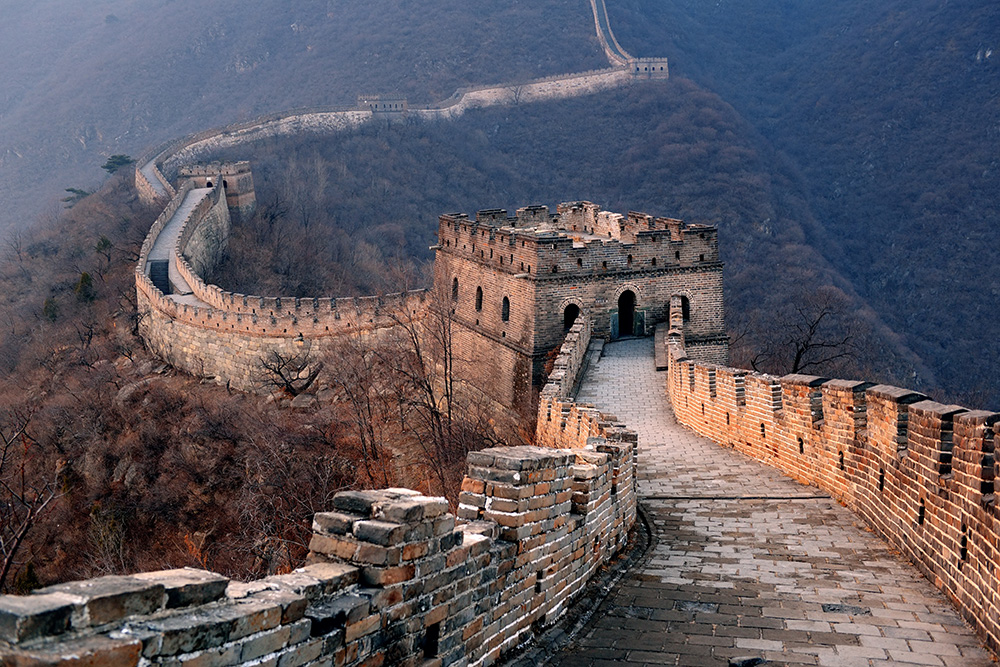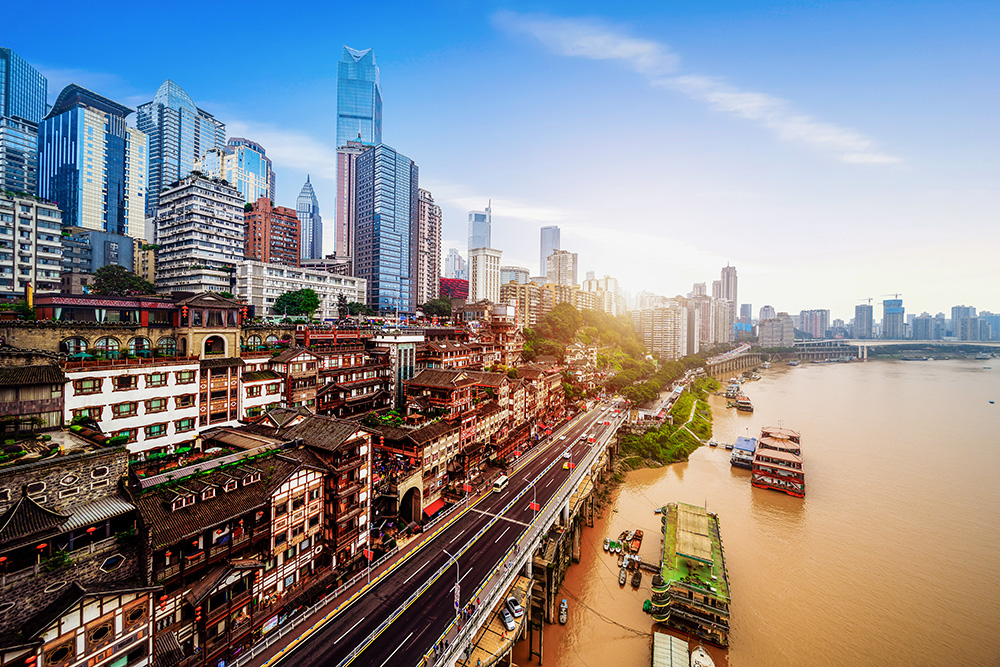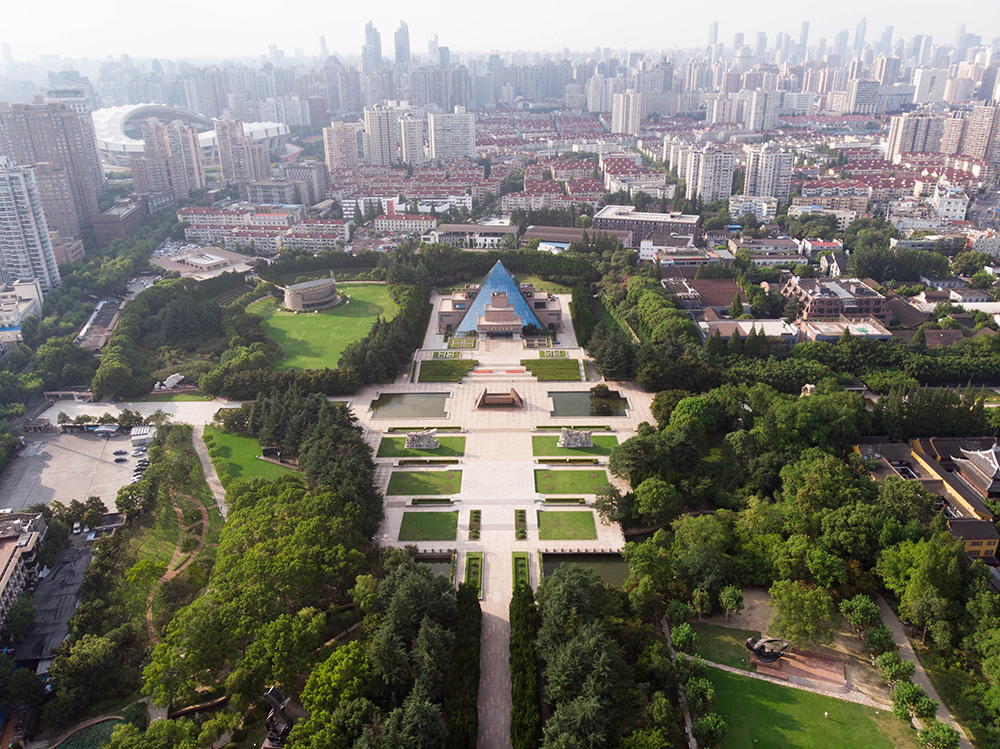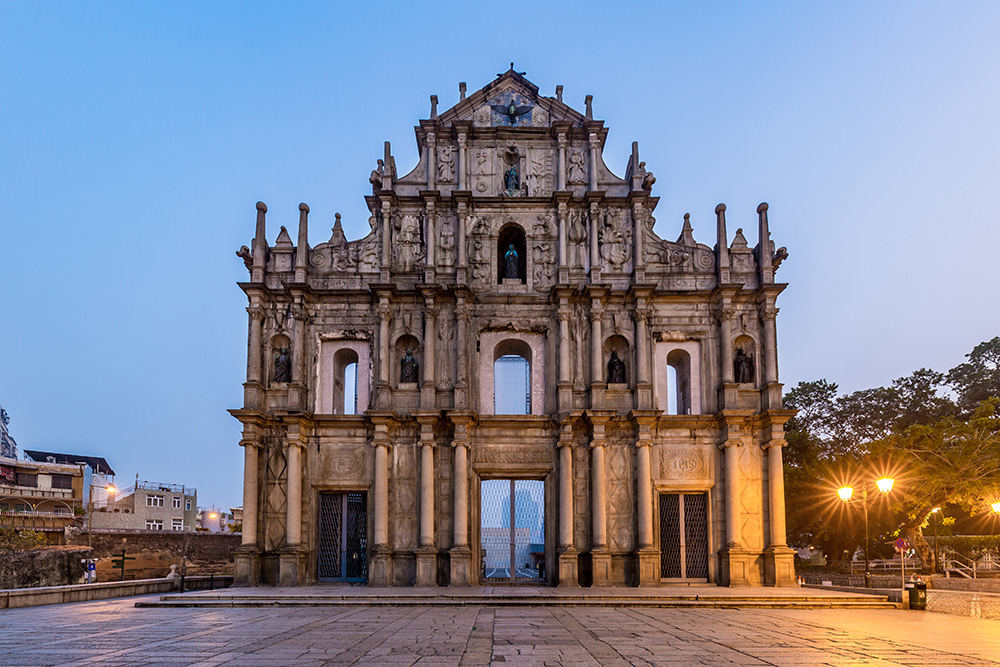Historical Era – Ancient and Classical (Ancient – 1840 AD)

The Chinese nation has an extensive and magnificent history. The Yangtze River and the Yellow River are the cradles of Chinese civilization. As discovered by modern archaeological excavations, ancient humans such as Yuanmou Man, Lantian Man, Peking Man, and Wushan Man, all lived in parts of China, and have left behind numerous cultural heritages. Among others, there is the Hongshan culture in northeast China and the Longshan culture in Henan. These remain precious cultural treasures of the Chinese nation.
The establishment of the Xia dynasty, by Yu the Great, signified the end of primitive society and the start of a new chapter in Chinese civilization. The Xia dynasty went on to rule for 17 generations, but the final monarch, Jie of Xia, was tyrannical, and was defeated by Tang, the founder of the Shang dynasty. The Shang dynasty lasted for more than 500 years, but in the Battle of Muye, Xin (the last Emperor of Shang), was defeated by King Wu of Zhou and his allegiance of 800 dukes. Xin committed self-immolation. Two hundred years after the establishment of the Zhou dynasty, King Ping of Zhou was forced to move eastwards, ending the Western Zhou dynasty, and beginning the Eastern Zhou dynasty. It marked the start of a turbulent period filled with endless disputes. The Five Hegemons of the Spring and Autumn period and the Seven Warring States rose one after the other, until 221 B.C., when Qin Shi Huang, first Emperor of Qin, conquered the other six states and inaugurated the first centralized and unified dynasty in Chinese history.
Qin Shi Huang died in the second year of his reign, and the States of Chu and Han contended for power. In 202 B.C., Liu Bang (later known as, Emperor Gaozu of Han), came out victorious and established the Han dynasty. Emperor Guangwu of Han’s reign was briefly interrupted by the Xin dynasty, but he was restored to power, and the Han dynasty continued until Emperor Xian was usurped by the founding of the Three Kingdoms period. The Jin Dynasty then followed, until the establishment of the Northern and Southern dynasties—a period when ruling powers changed frequently. Only in 581 A.D. did the Sui dynasty unify the Northern and Southern dynasties. Emperor Gaozu of Tang succeeded in establishing the Tang dynasty in 618 A.D.. Despite a short-lived interruption by the Wu Zhou dynasty, the Tang dynasty lasted until 881 A.D. However, it had already begun to decline from prosperity after the An Shi Rebellion.
The Five Dynasties and Ten Kingdoms period then started, and continued on until the Song dynasty was established in 960 A.D.. They were destroyed by the Yuan dynasty. Following on, during the Ming dynasty, Zheng He conducted seven voyages to the west, going as far as Mozambique in east Africa. In 1644, the Manchurian Qing dynasty established itself in the capital, Beijing, and subsequently eliminated the Ming dynasty, put down the Revolt of the Three Feudatories, and conquered Taiwan, in order to reunify China and enter a prosperous age. Nonetheless, by the reign of the Jiaqing Emperor, the Qing dynasty’s glory was already exhausted.
Historical Era – Modern Age (1840-1919 AD)

In 1840, Britain’s launching of the Opium War set into motion China’s precarious modern history. In 1842, Britain opened China’s market with the signing of the “Treaty of Nanking”. The incompetent and corrupt Qing dynasty aroused peasant uprisings in various places, the most famous of which was the “Taiping Heavenly Kingdom” rebellion. Other foreign powers followed in Britain’s footsteps, signing a series of unequal treaties with the Qing government, such as the “Treaty of Tientsin” among others and benefiting greatly from them.
Ministers of the Qing court tried to pursue progress and initiated Westernization in an attempt to rejuvenate the country. However, Japan not only defeated the Beiyang Fleet during the Battle of the Yalu River, but they also ended the movement towards Westernization in China. Nevertheless, the Qing dynasty did not give up completely following this. The Guangxu Emperor adopted the opinions of Kang Youwei and others to initiate the Reform Movement of 1898 with the intention of reforming politics. However, this was only maintained for 103 days before they were forced to stop by intense opposing conservative forces.
Foreign powers’ infringement on China eventually sparked a “national salvation movement” which culminated in the rise of the Boxer Movement whose goal was to support the Qing dynasty and destroy foreign powers. However, the strength of the two opposing sides was greatly imbalanced. The foreign powers used this as an excuse to organize the Eight-Nation Alliance to invade Beijing in 1900, forcing the Qing court to work with them. The Boxers were exterminated, and the Boxer Protocol or Xinchou Treaty was signed between the Qing dynasty and the 11 countries that had become involved in the war.
The Qing court repeatedly lost power and humiliated the country, surrendering to foreign powers while still holding lofty ideals and intending to save the country through revolution. The 1911 Wuchang Uprising shocked the whole country and the flames of revolution burned all over the country as the Qing dynasty was overthrown and China’s monarchy was ended. On January 1st of the following year, the Republic of China was established after which the Beiyang government and warlords took over. At the Paris Peace Conference in 1919, China’s territory continued to be infringed upon by foreign powers setting in motion the May Fourth Movement which opened a new chapter in China’s history.
Historical Era – Republican Era (1919-1949 AD)

The May Fourth Movement opened a new chapter in China’s new democratic revolution and marked the beginning of Marxist ideologies in China. In 1931, the Communist Party of China began in Shanghai and commenced the development of its democratic revolution program in the following year. In 1924, the Kuomintang and the Communist Party formed an alliance in order to win the revolution. They established a revolutionary united front called “The First United Front” which helped them make tremendous progress against warlordism in China. However, after the Shanghai massacre or the “April 12 incident” in 1927, the Kuomintang and the Communist Party split. The Nationalist government succeeded in the Northern Expedition, defeating the major warlords of that time, while the Communist Party of China continued its revolutionary struggle launching the Nanchang Uprising and other activities to form the Red Army.
The struggle between the Kuomintang and the Communist Party did not stop. In 1931, Japan caused the “Mukden Incident” (also known as the “Manchuria Incident”) as a pretext to invade and occupy three eastern provinces of China. On March 7, 1937, a dispute with the occupying Japanese army escalated into the Marco Polo Bridge Incident. When Chinese troops fought back at Marco Polo Bridge, a nationwide resistance began. That year, Beiping and Tianjin fell successively. In August, China and Japan fought fiercely in the Battle of Songhu. In September, the Chinese army won a series of battles in the Battle of Taiyuan but nonetheless Shanghai eventually fell. The Nationalist government moved the capital to Chongqing, as the capital Nanjing was also captured by the Japanese at the end of 1937. In 1938, Guangzhou and Wuhan fell into the hands of the Japanese army. The Sino-Japanese War then entered a stalemate stage. After an arduous struggle by Chinese soldiers and civilians, the Second Sino-Japanese War, also known as the War of Resistance, was finally won in 1945.
After the war, the Kuomintang and the Communist Party signed an armistice agreement creating the Second United Front. However, in 1946, the Kuomintang attacked the Liberated Area and civil war broke out. The People’s Liberation Army won the three major battles of Liaoshen, Huaihai, and Pingjin, as well as the Yangtze River Crossing Campaign, forcing the Kuomintang to retreat to Taiwan.
Historical Era – The People’s Republic of China (1949 AD to present)

In 1949, Mao Zedong, then Chairman of the Communist Party of China and Chairman of the Central People’s Government, solemnly declared the establishment of the People’s Republic of China in the capital, Beijing. With the founding of the People’s Republic of China, the country began adhering to the Five Principles of Peaceful Coexistence proposed by Premier Zhou Enlai and was recognized by the international community. Internally, China embarked on land reform, formulated a five-year plan, actively developed its industry and agriculture, and carried out three major transformations, including a shift from the capitalist mode of production to a socialist mode of production, which was the primary stage of socialism.
From 1957 to 1966, China accelerated its socialist development. The output of major industrial products increased several times over, occasionally even more than ten times. Industrial assets such as factories and machines tripled, and national income greatly increased. However, during the “Cultural Revolution”, which lasted ten years, beginning in May 1966 and ended in 1976, New China regressed and lagged in all aspects including politics, economy, and culture. The party, the state, and the people suffered severe losses.
In 1978, under the leadership of Deng Xiaoping, the Third Plenary Session of the Eleventh Central Committee of the Communist Party of China adopted the “reform and opening up” policy, which determined that the focus of the party and the country’s work should be a drive towards socialist modernization. This would inform reforms in both political and economic fields and follow the path of socialist modernization with Chinese characteristics. After the reform and opening up, China’s economy developed rapidly, the gross national product has increased significantly, and the life of the people has changed tremendously.
Jiang Zemin became the new General Secretary of the Central Committee of the Communist Party of China in 1989 and took over as President in 1993. He continued to adhere to the policy of reform and opening up. China’s economy continued to develop rapidly, domestic politics remained stable, and living standards improved. The Party also actively carried out diplomatic activities internationally developing good relationships with countries all over the world.
The 14th National Congress of the Communist Party of China was held in 1992. It was reaffirmed that China’s economic reform should strive towards establishing a socialist market economic system and abandoning the planned economic system that was unable to meet the needs of national production. Hong Kong and Macao were returned in 1997 and 1999 respectively, and the Chinese government resumed its sovereignty over both.
In the new century, China has basically accomplished the establishment of a socialist market economy system, and formally joined the World Trade Organization in 2001. The economy has developed rapidly and the GDP per capita has continued to increase. In 2011, China became the world’s second largest economy after the United States, and the speed of its economic development has attracted global attention.
At the First Plenary Session of the Sixteenth Central Committee of the Communist Party of China, held in 2002, Hu Jintao became the new General Secretary of the Central Committee of the Communist Party of China and took over as President of the State the following year. In 2012, the First Plenary Session of the Eighteenth Central Committee of the Communist Party of China elected Xi Jinping as General Secretary of the Central Committee of the Communist Party of China, and he took over as the chairman of the country the following year, continuing to lead the party, the country and the masses toward the “two centenary” goals. In 2015, China implemented the Belt and Road Initiative. “Belt” refers to the “Silk Road Economic Belt” and “Road” to the “21st Century Maritime Silk Road”. The goal is to develop partnerships with countries and regions along the Belt and Road to jointly build a community with a shared future for mankind. In 2019, the state announced the “Development Plan for the Guangdong-Hong Kong-Macao Greater Bay Area”. The Bay Area includes Guangzhou, Shenzhen, Zhuhai, Foshan, Huizhou, Dongguan, Zhongshan, Jiangmen and Zhaoqing, and Hong Kong and Macau Special Administrative Regions. Local cooperation will promote the economic development of the Bay Area and build a city cluster that is attractive for residents, business and tourism.
Hong Kong

On 15th August 1945, Japan surrendered and World War II ended. As a key port for foreign trade, Hong Kong was ready to rise up again. Its economy quickly recovered, driven by finance, industry, and export trade. This attracted a large number of people to migrate to Hong Kong. From the 1950s to the 1980s, Hong Kong relied on its advantages as a deep-water port and established international trade center to vigorously develop its manufacturing industry from the early cotton industry to the later electronics, clocks, toys and clothing industries. Later, tertiary industries such as finance and real estate also developed, helping to create an Asian economic miracle
China and Britain started negotiations regarding Hong Kong from 1982 to 1984. Finally, in 1984, the two countries signed the Sino-British Joint Declaration, which determined that China would resume its exercise of sovereignty over Hong Kong on 1st July 1997.
On 1st July 1997, Hong Kong returned to the motherland and became one of the special administrative regions of China. After the reunification, Hong Kong implemented the following principles — “One Country, Two Systems”, “Hong Kong People Administering Hong Kong” and “a high degree of autonomy” according to the Basic Law. Hong Kong’s long-term prosperity and stability have been fully guaranteed, and its economy, society and people’s livelihood have achieved unprecedented development.
Since its opening as a port 180 years ago, Hong Kong has become an important international financial center and aviation and shipping hub in Asia and even the world, due to its unique advantages as a free port and the city’s blend of Chinese and Western cultures. In recent years, the government of the Hong Kong Special Administrative Region (HKSAR) has developed Hong Kong into an international science and technology innovation center relying on its advantages in science, education and scientific research.
Macao

The Chinese government has taken great pains to bring Macao back to the motherland. On 25th April 1974, Portugal adopted political democracy after the success of the Carnation Revolution and admitted its illegal occupation of Macao. When China and Portugal established diplomatic relations in 1979, the fact Macao was an integral part of China’s territory was reaffirmed in the Sino-Portuguese negotiations. Later, China proposed the “One Country, Two Systems” policy as a solution to address the problem of differences in political systems in Hong Kong and Macao after their handover to China. After four rounds of negotiations, China and Portugal finally reached a consensus in June 1986. The “Sino-Portuguese Joint Declaration” was signed in April the same year. The Joint Declaration established that the Macao Special Administrative Region is an integral part of China’s territory, and that China will resume sovereignty over Macao effective from 20th December 1999. According to the Sino-Portuguese Joint Declaration, China will implement the “One Country, Two Systems” policy to guarantee “Macao people governing Macao with a high degree of autonomy”. On 31st March 1993, the Basic Law of the Macao Special Administrative Region of the People’s Republic of China was adopted by the National People’s Congress of the People’s Republic of China in Beijing.
At 00:00, on 20th December 1999, the ceremony for the transfer of sovereignty was solemnly held in Macao by the Chinese and Portuguese governments. This historical moment was witnessed by political leaders and people from all walks of life of the two countries. The Basic Law of Macao SAR was officially implemented, together with the establishment of the Macao SAR government. On the following morning, 21th December 1999, the People’s Liberation Army Macao Garrison entered Macao to take on defensive responsibility. They received spontaneous and warm welcome from the local crowds.
Macao entered an era of rapid development from the founding of the P.R.C. in 1949 to its handover to the motherland in 1999. The rapid economic development in Macao was driven by the strong impetus created by local industrial development, the gaming industry, tourism, real estate, finance and other sectors. During the 20 years since the handover, the central government has been continuously supporting Macao’s integration into China’s overall development plan, and build itself into a world center for tourism and leisure, as well as a platform for trade cooperation between China and Lusophone countries. The Macao SAR government has been working hard to promote a diversification within its economy, fostering the development of emerging industries such as exhibitions and conventions, TCM, the culture and creative industries, and specialized finance. Macao strives to develop into a base for exchange and cooperation featuring Chinese culture as the mainstream and multi-cultural diversity. In 2006, Macao overtook Las Vegas in terms of gambling revenues to become the gaming capital of the world. Nowadays, Macao boasts the highest GDP per capita in China and is one of the most affluent cities in Asia. In the future, the Macao Light Rail will conveniently connect with the Guangzhou-Zhuhai Intercity Railway, allowing easy access to the whole Greater Bay Area and the intercity high speed railway network of China at large.